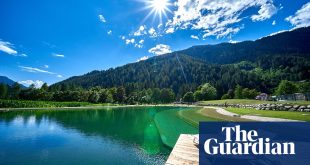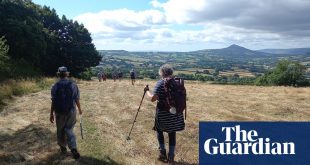Driven by increasingly expensive car hire and an appetite for sustainable tourism, visitors to Ireland are discovering the lure of public transport. Fares on Irish public transport were cut by 20% in April until the end of this year and halved permanently for those aged 19 to 23, the first such reductions in Ireland since 1947. Add to that deeply discounted online fares – or the Leap Card, which offers even heftier price cuts – and now’s the time to discover Ireland’s most rail scenic journeys. We pick six epic trips that cover all corners of the country, from the Atlantic coast to the sunny south-east – as far as Northern Ireland’s dramatic shore.
Rosslare to Dublin
Look out of the window, and the County Wexford countryside is flat, an endless sky stretching far out over the water and marshy plains. This entire area of south-east Ireland lies below sea level, and the landscape itself is a feat of 18th-century engineering, when the local mud flats and a sprinkling of islands were drained and harnessed to become productive land, known as the Sloblands. They now offer a winter sanctuary for geese and swans from Iceland, Greenland and Siberia. It’s also the starting point of a two- to three-hour journey on one of Europe’s most scenic rail routes, rolling off from Rosslare Europort, Ireland’s south-easterly French and British ferry hub.
Within 15 minutes, the church spires of Wexford Town appear over its brown brick-and-plaster-rendered architecture – the urban layout feels it straddles water and land as the train cuts through the harbour like a tram, in front of a bow-shaped quay lined with handsome three-storey buildings. The sea is on both sides – a statue of Commodore John Barry, a local man who is often credited as the father of the US navy, presides over the peaceful scene. He appears to challenge the town’s past as Ireland’s first port of call for bloodthirsty Vikings and Cromwellian troops. As the train slinks out of town, it casts a shadow over the Irish National Heritage Park, where that turbulent history and invasions are explored in detail.
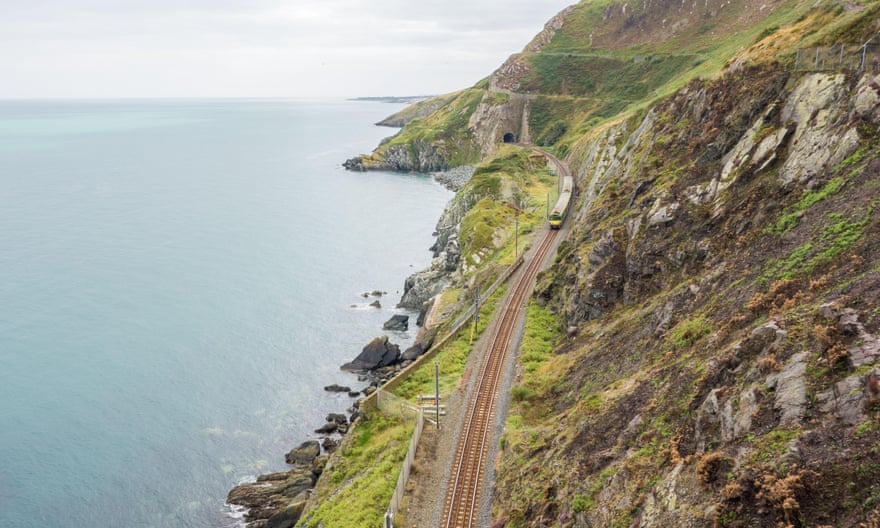
The train moves north and inland, but remains close to water as it curves and twists along the contours of the River Slaney. It reaches Enniscorthy – a striking, ancient Norman settlement – through a series of tunnels and a minimalist rail bridge. It’s the hometown of novelist Colm Tóibín – and regularly features as a setting in his books or movie adaptations (along with Curracloe Beach, near Wexford Town, which also landed a role in Saving Private Ryan – as the blood-stained Normandy landing site for troops on D-day). Just outside Enniscorthy, at Vinegar Hill, local rebel forces resisted British infantry during the notorious 1798 rebellion. The standoff lasted for a month, and that brief glimmer of triumph is narrated at the National 1798 Rebellion Centre on Parnell Road.
As the track runs farther north, past Arklow in County Wicklow, the scenery becomes positively Alpine. We pass over gushing streams and the track hugs high conifers as the train climbs higher and higher. It snakes around bends of pine and over old dry stone bridges before entering the Vale of Avoca – a lush valley where the Avonmore and Avonbeg unite at the Meeting of the Waters to become the Avoca river – and eventually stopping at Rathdrum. Just a short walk from the village is Avondale Estate and Forest, the birthplace of politician and Home Rule pioneer Charles Stewart Parnell. The house is currently under extensive renovations but the great expanse of gardens reopened to the public last month.
Farther north, the train leaves Wicklow Town and veers east, trundling parallel with the pebbled coastline. To the left, marshlands are alive with kingfishers and egrets as far as the fertile, rolling hills that shape the horizon. On the approach to Greystones, lone figures walk the beach and, in town, charming restaurants like the Happy Pear, a plant based cafe and bakery, line the streets.
From Greystones, Bray Head approaches, a high rocky peninsula that juts into the Irish Sea. The train offers soaring views over crashing white-crested waves and sandy coves. It darts between tunnels, emerging into blinding sunlight that heralds yet another dramatic coastal view, more spectacular than the last, then grinds to a halt at Bray. From here, passengers can continue on to Dublin city centre with a handful of stops, or board the DART commuter service that meanders and halts at idyllic seaside towns such as Dalkey or Killiney.
Book at Irish Rail, from €7.49 single
Cork to Cobh
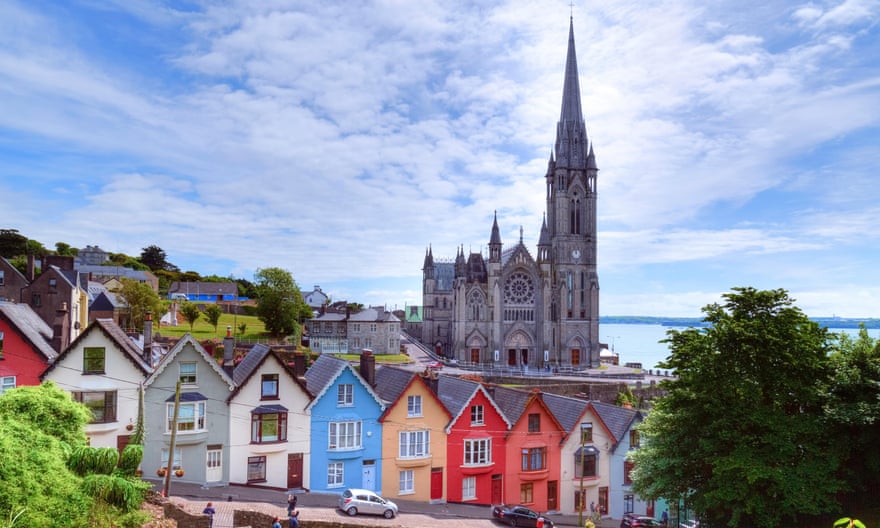
This 24-minute train journey departs from Kent station in the city, but in that brief time the tracks offer spectacular seaside settings as far as Cobh, a very picturesque town on one of the world’s largest natural harbours. The train navigates the contours of the Belvelly Channel then, veering east, it stops at Little Island before moving on to Ireland’s only wildlife park – Fota Island. Cobh’s red-brick station is the terminus – and it was also the terminus for many aboard the ill-fated RMS Titanic as the final departure point for the ship on 11 April 1912. Drop next door to the Cobh Heritage Centre to discover the story of Annie Moore, who departed from Cobh just before Christmas 1891 to become the first immigrant to be processed at Ellis Island, New York.
Book at Irish Rail, €3 single (Leap Card)
Western Rail Corridor
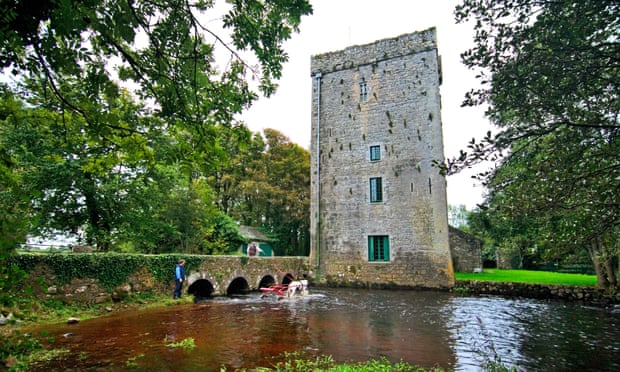
Departing from Galway for Limerick, this old line follows the tourism trail less travelled through ancient townlands and off-radar villages for 80 minutes. Low stone walls cut through the countryside, creating a patchwork of green as far as Gort, a market town close to the historic gardens of Coole Park nature reserve or Thoor Ballylee, where poet WB Yeats lived (and director John Ford filmed the opening scene of the 1952 movie The Quiet Man). From Ennis, the train curves round Mooghaun Hill Fort and woods, before stopping at Sixmilebridge. From this riverside village it’s an easy cycle to Craggaunowen – a park that explores Celtic life during the bronze age – or the pretty village of Quin, with its magnificent Franciscan abbey ruin. Spend the evening at Limerick City’s Locke Bar, in a river setting in the shadow of Saint Mary’s Cathedral.
Book at Irish Rail, €7.49 single
Dublin to Belfast
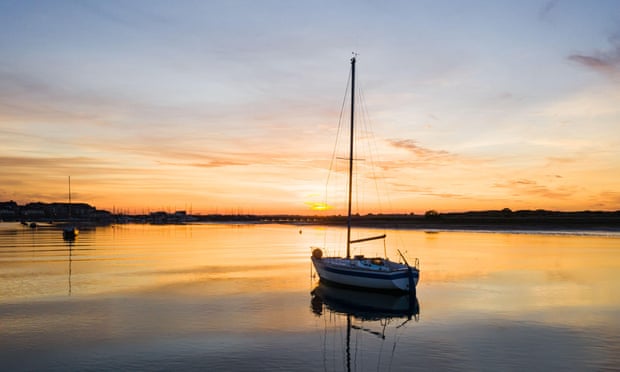
Leaving Dublin’s Connolly station, the train skirts Malahide Marina and crosses the estuary before heading north through the countryside. Expect long swathes of coastline as far as Drogheda – a fortified town with narrow lanes that straddles the River Boyne. It’s just 8km from the Unesco-listed archaeological site of Brú na Bóinne, a landscape etched with impressive prehistoric tombs. As the train ducks and dives through fields and shore on the two-hour journey, it crosses the 18-arch Craigmore Viaduct, which stretches for a quarter of a mile over a valley. Reaching the destination at Lanyon station, follow the River Lagan north on foot for just over a mile to discover the birth of an ocean colossus at the Titanic Belfast.
Book at Irish Rail or at Translink, €13.99 single
Derry to Coleraine
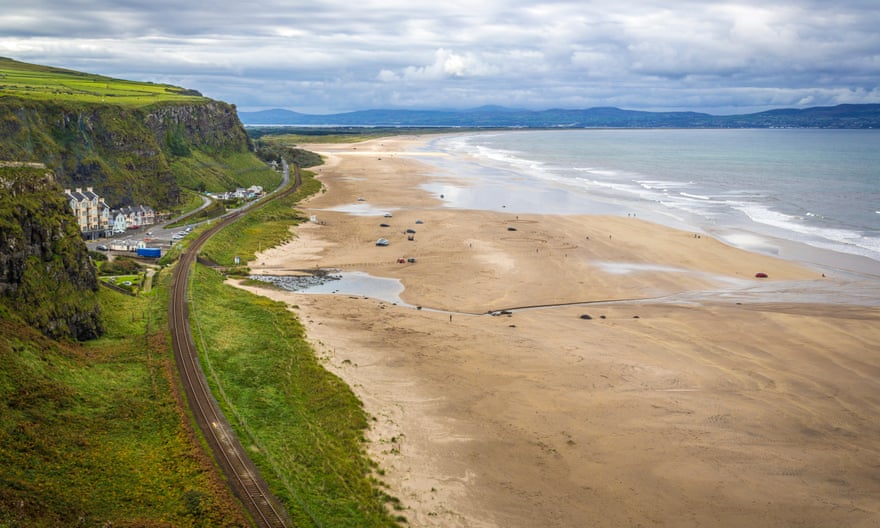
Described by Michael Palin as “one of the most beautiful railway journeys in the world”, this stunning 40-minute ride meanders along the banks of the River Foyle before reaching a wide stretch of low plains by the estuary. On reaching the coast, the train follows the sandy dunes of Benone Strand, flitting in and out of tunnels, like strobe lighting, with breathtaking views coming in and out of focus. Mussenden Temple, a folly – and once the minuscule library of an old estate – teeters high above on a cliff edge. The tranquil seaside village of Castlerock leads to Coleraine, where visitors can travel on to the windswept Antrim coast by bus.
Book at Translink, £10 single
Longford to Sligo
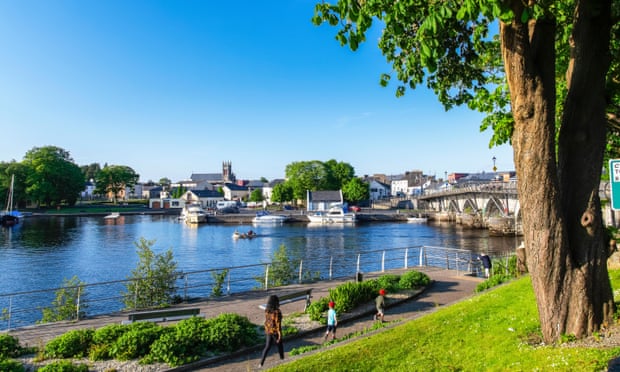
From Longford, rail and river intertwined for an 80-minute journey. Within 40 minutes, the train crosses a bridge over the Shannon, the longest river in both Great Britain and Ireland. It links Counties Roscommon and Leitrim, before running alongside Albert Lock, where pleasure cruisers wait patiently on a canal. On the approach to Carrick-on-Shannon, Connaught’s boating capital, the river disappears from sight periodically, then might magically reappear beyond a thicket. Linger in this pretty, flower-drenched marina town to see Ireland’s smallest chapel, before moving to Boyle. It’s the home town of actor Chris O’Dowd and silver-screen legend Maureen O’Sullivan, mother of Mia Farrow – as well as a magnificent medieval abbey. The last leg of the journey ventures into hilly Yeats country – Sligo.
Book at Irish Rail, €9.35 single
 Top Naija News: Nigerian News, Breaking News Nigeria and World News Top Naija News is a daily news publication in Nigeria, delivering the latest breaking news in Nigeria and around the world.
Top Naija News: Nigerian News, Breaking News Nigeria and World News Top Naija News is a daily news publication in Nigeria, delivering the latest breaking news in Nigeria and around the world.

